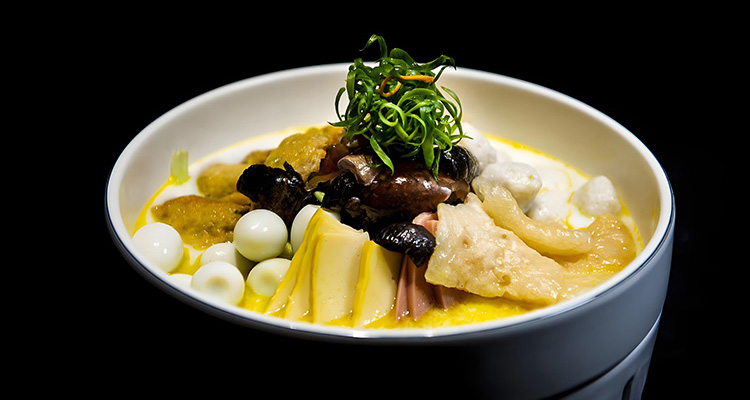Li Hongzhang Chop Suey: Historic Chinese Banquet Dish
1. Li Hongzhang Chop Suey: A Legendary Dish Born from Diplomacy
In China’s vast culinary landscape, few dishes carry as much history as Li Hongzhang Chop Suey. Created in the late 19th century, this hearty stew began as an improvised dish made for a homesick Chinese diplomat. Over time, it evolved from a creative mix of leftovers into a refined banquet course. Today, it’s both a Hefei specialty and a symbol of early Chinese-American food culture, connecting East and West through taste and tradition. For travelers, tasting this dish is more than enjoying a meal; it’s experiencing a story that transcends borders.
2. Origin Story: A Diplomatic Misunderstanding That Sparked a Recipe
The story of Li Hongzhang Chop Suey dates back to 1896, during Li Hongzhang’s visit to the United States. Unaccustomed to Western cuisine, Li asked his chef to create something comforting using leftover meats and vegetables, seasoned in a Chinese way. The result was unexpectedly delicious and impressed guests from both East and West. This simple yet ingenious creation became known as Li Hongzhang’s medley, later shortened to Chop Suey. The dish embodies the essence of cross-cultural exchange and Li’s practical yet inventive spirit.
3. Cultural Significance: A Bridge Between Chinese and American Foodways
More than just a recipe, Li Hongzhang Chop Suey represents one of the first culinary bridges between China and America. In the United States, it evolved into the popular “chop suey” dish that helped introduce Chinese flavors to Western diners. Back in Hefei, it became a dish of pride, often served at formal banquets to honor guests. Today, it symbolizes cultural adaptation, innovation, and a sustainable approach to cooking by using ingredients resourcefully — values that feel modern even after a century.

4. Ingredients: A Luxurious Mix of Land and Sea
The traditional version of Li Hongzhang Chop Suey combines premium ingredients from both land and sea.
- Chicken: provides a tender, mild base.
- Sea cucumber: adds gelatinous richness.
- Fish maw: offers silky texture.
- Squid: brings chewy contrast.
- Ham: gives smoky, savory depth.
- Shiitake mushrooms: add earthy aroma.
- Dried bean curd sticks: absorb and enhance the broth’s umami.
Optional additions like bamboo shoots or bok choy make the dish seasonal and fresh. The combination delivers balanced nutrition, flavor, and texture — a reflection of Anhui cuisine’s harmony.
5. Preparation: Slow-Simmered for Depth and Harmony
The secret to this dish lies in slow braising to merge complex flavors.
- Prepare a rich stock using chicken or ham bones.
- Blanch chicken and rehydrate sea cucumber and fish maw. Slice the ham, squid, and mushrooms.
- Sauté scallions and ginger for aroma, then add all ingredients to the pot.
- Pour in the stock, simmer gently for 30–40 minutes.
- Add bean curd sticks near the end and season with light soy sauce, salt, and white pepper.
- Thicken slightly with a cornstarch slurry for a glossy, hearty finish.
Each ingredient keeps its character while contributing to a cohesive, flavorful stew.
6. Flavor and Texture: A Symphony of Umami and Contrast
A bowl of Li Hongzhang Chop Suey is rich, warm, and full of depth. The broth is layered with umami from the ham and seafood, balanced by the freshness of chicken and vegetables. The textures alternate between silky (sea cucumber, fish maw), bouncy (squid), and soft (tofu skin), making every bite different yet harmonious. The mild seasoning lets natural flavors shine, a comforting dish that appeals to both Chinese and international palates.

7. How to Eat It: Serving Suggestions and Pairings
Enjoy this dish hot, served in a deep bowl to retain warmth.
- Pair with: steamed white rice or mantou (steamed buns) to soak up the savory broth.
- Tasting tip: try it plain first, then add a touch of black vinegar or chili oil for contrast.
- Drink pairing: light Longjing tea or a crisp white wine complements its richness perfectly.
8. Where to Try It and Ordering Tips for Travelers
If you’re visiting China, head to Hefei, Anhui Province, to taste the authentic version. Visit traditional Hui cuisine restaurants or heritage eateries near Li Hongzhang’s Former Residence. Upscale restaurants in Beijing and Shanghai also serve premium interpretations.
Traveler tips:
- Say “Li Hongzhang Da Zahua” or “Li Hongzhang Chop Suey” when ordering.
- Expect slightly higher prices due to luxury ingredients.
- Portions are generous and best shared.
- Mention any seafood allergies beforehand to adjust ingredients.
9. Home Version: A Simplified Recipe for Travelers
You can recreate a simple version at home with everyday ingredients.
You’ll need:
- 200g chicken breast, 50g ham, a few shiitake mushrooms, 30g bean curd sticks, vegetables like carrot or Napa cabbage, light soy sauce, salt, and chicken stock.
Steps:
- Blanch chicken and soak mushrooms and bean curd sticks.
- Sauté ginger and scallions, add chicken and mushrooms.
- Pour in chicken stock, simmer 20 minutes.
- Add ham, bean curd, and vegetables; cook until tender.
- Season and slightly thicken with cornstarch.
It’s a homestyle version that captures the comforting spirit of the original dish in about 40 minutes.

10. Conclusion: A Taste That Connects Past and Present
Li Hongzhang Chop Suey is more than a dish; it’s a chapter of Chinese culinary diplomacy. From 19th-century banquets to modern dining tables, it has bridged East and West through creativity and flavor. Whether savored in Hefei, discovered on overseas menus, or cooked at home, it tells a story of innovation and cultural exchange, a taste of history in every bite.


